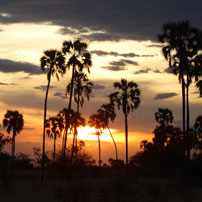
This was my first visit to the Selous Game Reserve and Ruaha National Park in southern Tanzania, and to say I was excited before I left was an understatement! I had heard so much about these less visited game areas in the south, and I couldn’t wait to see them for myself. After my safari, I then headed to the spice island of Zanzibar for a truly whirlwind visit!
The Selous Game Reserve is in fact Africa’s largest wildlife area and the main game-viewing areas are focussed around the minor lakes and smaller channels which all flow from the mighty Rufiji River system. Game viewing activities are split between boat cruises and game drives, with guided walks and fishing also available. I love being on water (when it’s flat!) and really enjoyed the slower, more tranquil pace of a boat safari. We saw so many hippos and crocodiles – it was amazing to see the storks and herons treading their way carefully through the maze of crocs or landing on the back of a hippo for the best fishing vantage 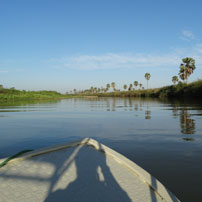 point! Just before sunset a huge herd of elephant appeared, splashing and trumpeting along the water’s edge, before heading swiftly back into the bush. A big highlight for me was the birdlife in the Selous. It was superb. There were large flocks of storks, herons, spoon-bills and white billed pelicans, with many smaller birds including kingfishers, bee-eaters and golden weavers as well as plenty of birds of prey – I saw my first palm nut vulture too!
point! Just before sunset a huge herd of elephant appeared, splashing and trumpeting along the water’s edge, before heading swiftly back into the bush. A big highlight for me was the birdlife in the Selous. It was superb. There were large flocks of storks, herons, spoon-bills and white billed pelicans, with many smaller birds including kingfishers, bee-eaters and golden weavers as well as plenty of birds of prey – I saw my first palm nut vulture too!
The waterways of the Selous are lined with palm trees and very picturesque in the setting sun. At dusk the wading birds flew overhead in a perfect V-formation and much to my surprise and my boat captain’s amusement, many tiny silver fish started jumping and landing in our boat and on my lap! After an initial moment of squeamishness, I plucked up the courage to scoop them up and through them back into the water. As my captain 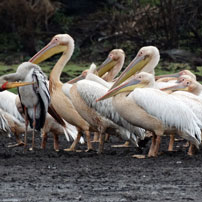 pointed out with a cheeky grin “no rod needed for fishing on the Selous!”
pointed out with a cheeky grin “no rod needed for fishing on the Selous!”
I really found the Selous a beautiful game reserve. The habitat and scenery varies significantly from rocky plains to rolling hills, lakes and marshes to savannah bush country and miombo woodlands and therefore provides some very pretty outlooks on the game-drives. On dry land I saw lion, a large pack of hyaena with huge bellies feasting on and squabbling over a giraffe carcass, kudu, wildebeest and many, many giraffe. A real highlight was seeing a pack of wild dogs at dusk joyfully teasing a few hyaena, mock chasing them with the adolescent pups practicing their hunting skills. Sometimes you have to work a bit harder to find the wildlife, but it is very rewarding when you do.
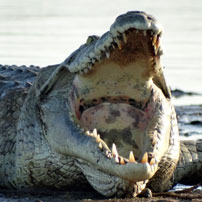 I then flew onto Ruaha National Park, famous for its huge herds of elephant and buffalo (over 300 at one count) and one of my loveliest leopard sightings to date! We saw two lionesses mourning the loss of their sister who had been killed by a herd of buffalo a few days before I arrived. I saw elephant eating red soil to supplement their mineral intake; the adults were expertly kicking the soil into their trunks and sucking into their mouths creating a red cloud around them, whilst the youngsters hadn’t quite mastered the technique twirling their trunks out of control! Along with giraffe, crocodiles, hippos and many birds, I saw bat eared foxes and lesser kudu too.
I then flew onto Ruaha National Park, famous for its huge herds of elephant and buffalo (over 300 at one count) and one of my loveliest leopard sightings to date! We saw two lionesses mourning the loss of their sister who had been killed by a herd of buffalo a few days before I arrived. I saw elephant eating red soil to supplement their mineral intake; the adults were expertly kicking the soil into their trunks and sucking into their mouths creating a red cloud around them, whilst the youngsters hadn’t quite mastered the technique twirling their trunks out of control! Along with giraffe, crocodiles, hippos and many birds, I saw bat eared foxes and lesser kudu too.
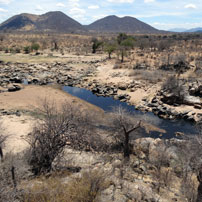 The Great Ruaha River is central to the game viewing region here, and at the end of the dry season in late October, as I experienced, it was bone dry and sandy, making it a great area for spotting elephant as they dig for water.
The Great Ruaha River is central to the game viewing region here, and at the end of the dry season in late October, as I experienced, it was bone dry and sandy, making it a great area for spotting elephant as they dig for water.
Ruaha also has an incredible array of habitats with dense Miombo woodland, open grasslands (fondly referred to as little Serengeti locally), riverine woodland, but most spectacular are the baobabs. There are hundreds, if not thousands, and they were in bloom; their delicate white flowers softening these great African giants. I also spotted a honey badger who sprinted about 50 met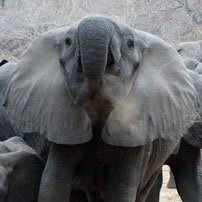 res back to his den at the base of a baobab and promptly disappeared!
res back to his den at the base of a baobab and promptly disappeared!
Tsetse fly are present in the Selous and Ruaha, and particularly bad at certain times of the year, especially near the onset of the rains at the end of October.
From Ruaha I then flew to Zanzibar and headed straight for the long white sand beaches on the east coast. Due to tidal movements, during the day the ocean recedes to the reef edge creating the very picturesque and iconic Zanzibarian coast with endless beaches to walk along and explore. Whilst ocean swimming can be limited during the middle of the day, the east coast has fewer properties making it a bit more of an exclusive paradise. The beaches on the north-west coast of the island are 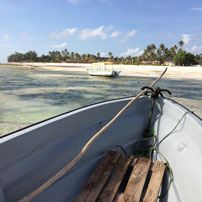 also beautiful, and if ocean swimming is a priority then a stay on this side of the island might be preferred. There are more properties in the north-west so depending on where you stay you are likely to see many more tourists on the beaches, as well as beach traders. Meanwhile Stone Town is a bustling, active town with historic buildings and winding alleyways brightly influenced by the Middle Eastern, Asian and local Swahili cultures. It is definitely worth spending a night or two in Stone Town for those interested in culture and history.
also beautiful, and if ocean swimming is a priority then a stay on this side of the island might be preferred. There are more properties in the north-west so depending on where you stay you are likely to see many more tourists on the beaches, as well as beach traders. Meanwhile Stone Town is a bustling, active town with historic buildings and winding alleyways brightly influenced by the Middle Eastern, Asian and local Swahili cultures. It is definitely worth spending a night or two in Stone Town for those interested in culture and history.
Southern Tanzania certainly lived up to my expectations! 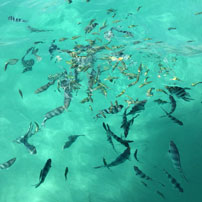 With a range of activities on offer in the Selous, and big game viewing available in Ruaha, the combination of these areas really offers a wonderfully diverse safari experience, without the crowds and in some of the most beautiful wilderness areas. Whilst Zanzibar offers the perfect escape to relax and unwind after a busy safari.
With a range of activities on offer in the Selous, and big game viewing available in Ruaha, the combination of these areas really offers a wonderfully diverse safari experience, without the crowds and in some of the most beautiful wilderness areas. Whilst Zanzibar offers the perfect escape to relax and unwind after a busy safari.
Julia stayed at: Selous Impala Camp, Roho ya Selous, Lake Manze Tented Camp, Sand Rivers Selous, Jongomero Camp, Mdonya Old River Camp, Jabali Ridge, Mwagusi Safari Camp, Kigelia Ruaha, Zanzibar White Sand Luxury Villas & Spa, Zawadi Hotel and Next Paradise.
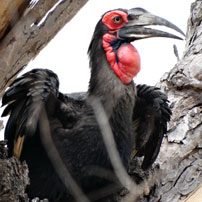 Julia site inspected: Siwandu, Ruaha River Lodge, Kwihala Tented Camp, Ikuka Safari Camp, Kichanga Lodge, Dongwe Ocean View, Echo Beach Hotel, Breezes Beach Club & Spa, The Palms, Baraza Resort & Spa, Essque Zalu, The Z Hotel, Gold Zanzibar, Zuri Zanzibar Hotel & Resort, Kilindi, Matemwe Lodge, Matemwe Retreat, Shooting Star Lodge, Bluebay Beach Resort & Spa, Zanzibar Palace, Park Hyatt and Serena Inn.
Julia site inspected: Siwandu, Ruaha River Lodge, Kwihala Tented Camp, Ikuka Safari Camp, Kichanga Lodge, Dongwe Ocean View, Echo Beach Hotel, Breezes Beach Club & Spa, The Palms, Baraza Resort & Spa, Essque Zalu, The Z Hotel, Gold Zanzibar, Zuri Zanzibar Hotel & Resort, Kilindi, Matemwe Lodge, Matemwe Retreat, Shooting Star Lodge, Bluebay Beach Resort & Spa, Zanzibar Palace, Park Hyatt and Serena Inn.
